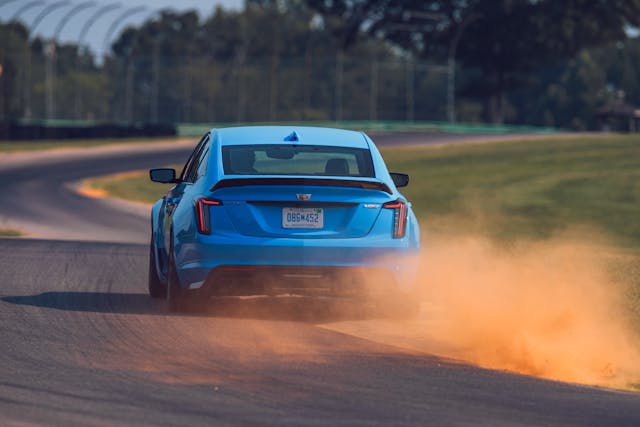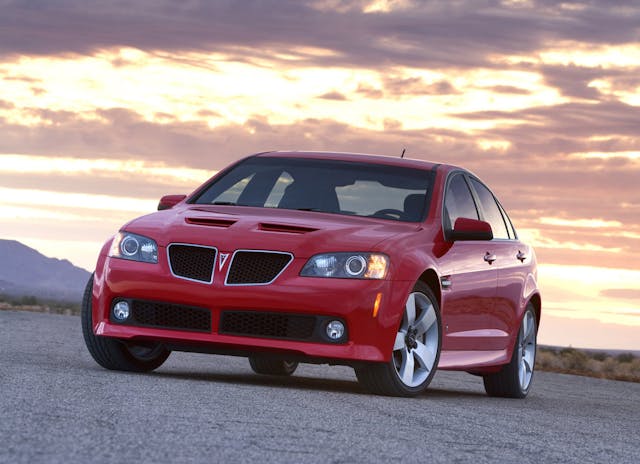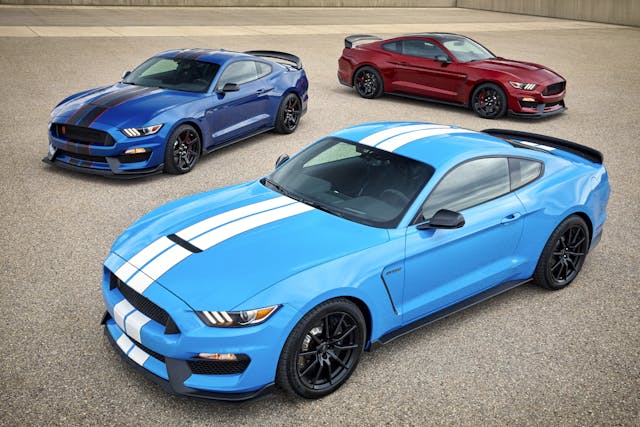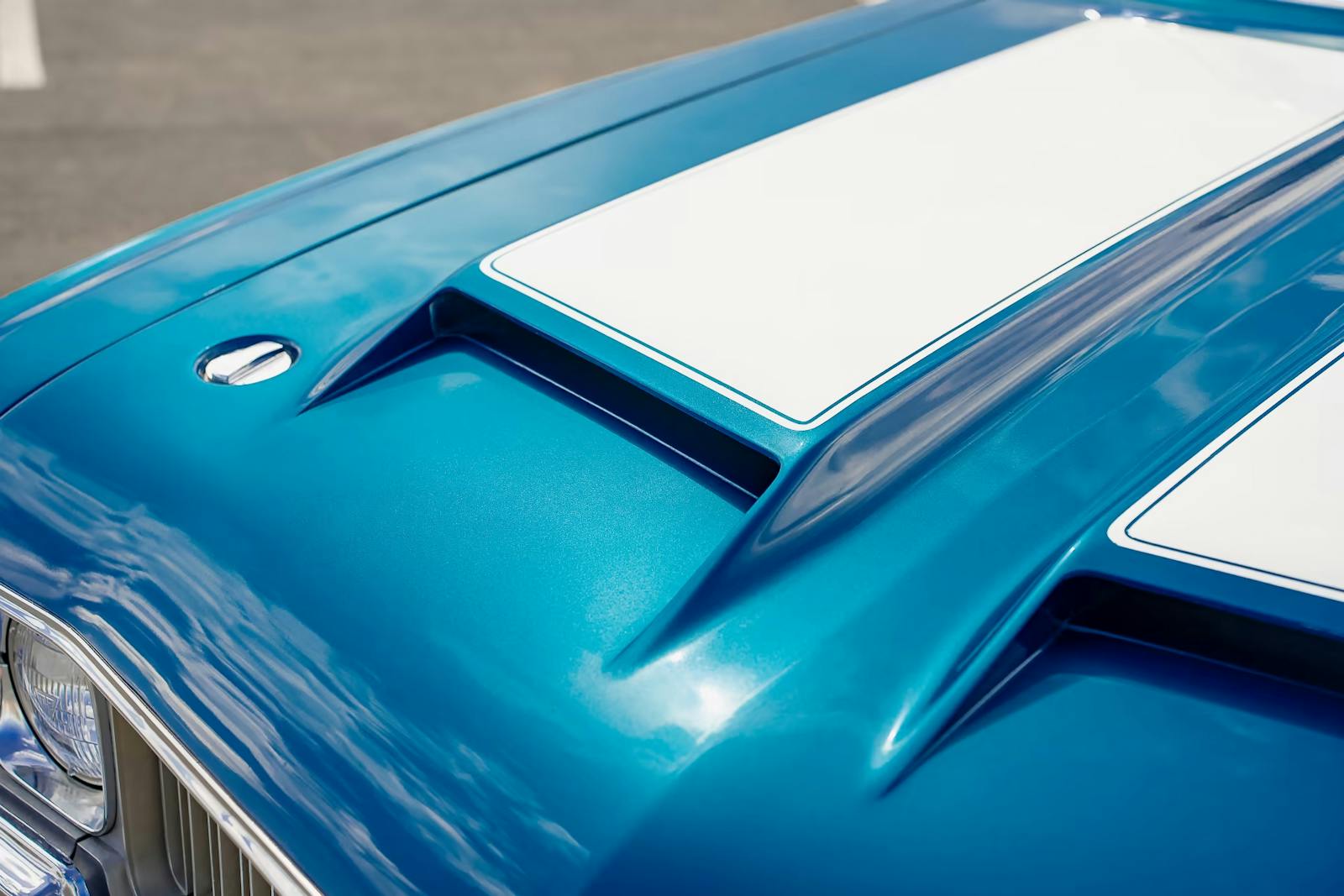Media | Articles
The Second Golden Age of Muscle Is Over, and It Was Better Than the First
The Hemi is dead. The Challenger and the Camaro as we know them are gone for good. Only the seemingly eternal Mustang remains. I think we can call the second golden age of American performance as being officially over, and what comes next is uncertain. It’s time to take stock of an automotive epoch that lasted over three times as long as the original, and produced cars that were arguably much better. In the future, the best of these twenty-first century muscle cars may even be more collectible. Does that sound like heresy? Maybe, but hear me out on this.
The original golden age of American muscle lasted just a decade or so, give or take, depending on what you believe was the first muscle car. It came to a crashing halt around 1974 with the multipronged assault of rising insurance rates, soaring gas prices, fuel shortages, and ever-tightening emission regulations. What followed the muscle car years has been dubbed “The Malaise Era” by journalists. It too lasted about a decade, and it took yet another generation before the next golden age of American performance cars arrived. But this one greater than the first, not just in acceleration and handling numbers but in the diversity and quality of the cars. Here are a few to try on for size:
The last manual V-8 performance sedans


As is so often the case, the apex of an epoch comes just before the end. Just as the T-Rex was around for the explosive end of the dinosaurs, the Cadillac CT5-V Blackwing is here to see out the second golden age of American automotive performance as the industry moves towards electrification and away from driver-focused fun like manual transmissions and high-displacement V-8s. The Cadillac is perhaps the greatest American sedan of the modern era, and given the endangered status of sedans in general, it’s likely to go down as the greatest of all time. With a 668 hp supercharged V-8, polished handling, and an available 6-speed manual (the take-rate for which has been around 50 percent). Not even out of production, the CT5-V Blackwing is already being viewed as semi-collectible. If the history of its GM super sedan predecessors is any indicator, these cars aren’t likely to get any cheaper in the future.


Its predecessors in super sedandom were of course the Chevrolet SS and the Pontiac G8 GXP. Yes, technically these were products of GM Australia’s Holden division, but in execution, powertrain and conception, they were thoroughly American-inspired. For years, American brands had tried and failed to build a credible sport sedan to tackle the Europeans, but with this pair GM finally succeeded in building what was essentially an American take on BMW’s beloved E39 M5, minus the crippling costs of ownership, and also with an available manual transmission. They never seemed to depreciate significantly once they became used cars, and today it takes around $50,000 to secure a manual transmission version of either one. After cars like the CT5-V Blackwing inevitably go extinct, it’s unlikely they’ll get any cheaper.
The most powerful muscle car, ever

This second golden age of American muscle gave birth to something muscle car fans of the 1960s couldn’t conceive of even in their wildest nitromethane fume-fueled fever dreams—The 2023 Dodge Challenger Demon 170.
Marketplace
Buy and sell classics with confidence
Superbird, Schmooperbird, this 1025-hp rolling affront to mundanity had what Dodge billed as “Holy $#!&” level performance: 0-60 in 1.66 seconds (which incidentally subjected the driver to 2.004G) and history’s first production 8-second muscle car in the quarter-mile (8.91 seconds ET at 151.17 mph). Holy $#!&”, indeed. And it is likely destined to be the fastest road-going muscle car with the classic big front-engine V-8 and rear-wheel drive formula. Because they’re likely to be among the most sought after muscle cars of the current golden age, even the eye-popping $150,000 to $200,000 asking prices of today may seem like an incredible buy in the future.
The best handling (and braking) muscle cars

Muscle cars from the 1960s gained a reputation as being one-trick ponies. Straight-line acceleration is where they excelled, and they didn’t do much else. There were exceptions, of course—the 1969 SS and Z/28 Camaros with four-wheel discs both handled and stopped well, for example. But the latest crop of muscle cars presents an embarrassment of riches from a braking and handling standpoint. The Mustang Shelby GT350R and Camaro SS 1LE were among the best. The headline to Car and Driver’s 2017 test of the latter said it all—”Born to run. And turn. And stop.” The myth of the one-dimensional muscle car was shattered. Brembo 6-piston calipers and GM’s FE4 suspension with Magnetic Ride Control gave it about 1.11G of grip, matching that of a Ferrari 488 GTB. It really was a supercar for everyman. Both the Shelby and the Chevy are phenomenal cars. It really comes down to whether your allegiance lies with the blue oval or the bowtie.

Do the muscle cars of this current, second golden age have the same charm and sense of nostalgia as those of the 1960s? No, of course not. But give them time. Production numbers also tended to be higher, and as the second golden age cars get older, their thoroughly digital nature will likely present greater serviceability issues. But in terms of build quality, performance, and handling, they’re light years removed from their predecessors. Automotive nostalgia also grows with time. And since it’s a virtual certainty that there won’t be another V8/ICE-powered muscle car revival, their end-of-an-era status makes a powerful case for collectability in the not-very-distant future.
***
Check out the Hagerty Media homepage so you don’t miss a single story, or better yet, bookmark it. To get our best stories delivered right to your inbox, subscribe to our newsletters.



















Funny what we now call muscle cars were called supercars in their day. This is the golden age of performance Period. Fastest quickest safest, lowest emission cars ever
Yeah, no. Just like classic rock, the “first generation” will never be matched. Of course, it’s all a matter of opinion, but I think few could argue that the style and class of the 50’s – 70’s is gone forever. Like the music of the 80’s, the second generation had it’s winners, but that was where it ended. “Better” isn’t always better.
Have a 22 ZL one Camaro. Cherry red, gray mohair interior, small wing on the rear; Beautiful! it does it all & easy to drive; it ‘loafs’ really well in the 80 to 110 range… I have not taken it to the track yet, but looking forward to that. I think it’s one of the best muscle cars (sport coupe?)ever
@jimmyroyalle, I absolutely agree. Definitely Golden Age of Performance, PERIOD.
I am fortunate in that I have had the generations of muscle cars. A ’63 SS Impala, 409, 4spd, 4.11 posi, later a 2002 Camaro SS and today a ’22 Mustang GT. The Stang only because in Thailand there are no Chevys, they pulled out several years ago, so I could not buy a Camaro.
hyperv6 said it best: EV cars are like music with no soul.
music with no soul isn’t music – it’s just sound (IMO)
I have been around for both muscle car eras. Yes, today’s cars are much better performers, but the technology that exists today wasn’t even thought of then, or was pretty rudimentary compared to today’s supercharged, turbocharged, fuel injected cars. I am sure these ICE cars of today will become the collector cars of tomorrow in about 20-30 years. However, I still enjoy driving my 1968 SS427 Impala that I bought new from Dana Chevrolet even though it gets only 12-14 mpg compared to today’s cars that get nearly double that with about 100 hp more than my 385 hp. Still merges onto the freeway doing more than the posted speed limit if I keep my foot in it!
This helps explain something I was trying to say elsewhere: if you only lived through the “second” you don’t get why the “first” and “second” golden ages are similar – but largely different. Not really a one-to-one comparison to be made. Hyperv6 said “perspective” and that’s the key.
Don’t give up on I.C.E. we still have Hydrogen and it could save us all.
It’s like switching from steam to gas. It takes a while to catch on.
I am showing my age, but the younger group will never get to hear and smell the sound of a 425 h.p. 409 or a 425 h.p. Hemi with both Daytona 4 barrels wide open. It was such a roar that you thought the hood was going to be sucked in. And if you had the extra cash for the weekend you would go to the Standard station and buy white pump fuel (about 105 octane), boy could you get those 7″ cheater slicks smoking, I,m getting tears in my eyes.
I still enjoy every drive in my 64 GTO that I bought new and haven’t modified in any way.
Forgot to mention that my 64 GTO last August won “Best Muscle Car” award at a local cruise-in with over 600 entries.
Congrats! 👍
2005 Chrysler 300 SRT 8 Hemi was a start that brought muscle car performance to a lot of guys at a reasonable price. A lot of ad ons are avaiable (just like the old days) to boost handling and performance for the average guy.
nothing says muscle car like four doors
I bought a new final V-8 2023 Charger widebody. Four doors, but the same chassis as the Challenger. I just like the appearance more. Muscle is muscle. Door count doesn’t count.
The first muscle car era came about because it was what the car buying people wanted, the second era came because buyers wanted to relive the excitement of the first era. Now it seems the buyer is again being over ruled by regulation as what we can buy as per the causes for the end of the first muscle car era.
Some years ago, I was at a party when a man was telling a story about how he had a late night spot at the local college radio station when he was younger One night he said – ” Tonight I’m going to put on something different”- and played Elvis Costello doing ‘ Radio Radio’. The phones lit up and the first caller screamed – “Sucks! Skynard ! “. If I hear the first few bars of ‘ Freebird ‘ that is the first thing that comes to mind and I can’t not chuckle. Now, I would guess, that Elvis and the Attractions is played on Classic Rock stations and no one bats an eye. Elvis Costello has now collaborated with Burt Bacharach and his wife Diana Krall is best known for doing jazz lounge act standards. So, as something of a contradiction, while I like my fancy shmancy play what ever you want car stereo about the only thing I ever tune into besides N.P.R. is the local college station. There’s a variety you’ll find nowhere else and a lot of ‘who is this?’ that you’d miss out on otherwise.
I just hope this generation of new drivers, once they grow up and have some excess cash to spend, want to buy performance cars the same way us current elder enthusiasts today gladly choose (or at least want) to spend our hard-earned but limited loot on horsepower and manual transmissions.
I bought a 6-speed manual CT5-V Blackwing, and am blown away by the performance and the ease of accessing that performance every time I get behind the wheel.
Imagine if… batteries & electric motors replace turbochargers, so we can eventually enjoy the orchestra of a naturally-aspirated engine coupled with the thrill of instant electric torque. As technology advances lead to lower weight and greater power density, we could end up with the best of both worlds! Mate Rimac is laying the groundwork with Bugatti 😉
Unfortunatly, the orchestra of a naturally-aspirated engine will be coming out of the radio.
One point missed is that many ‘60s muscle cars were not expensive. So many young people could afford them… some like the Road Runner were basic models to keep the price down.
today’s versions are far better cars, but are priced out of reach for many, especially younger drivers. The current muscle cars are likely purchased by older folks who made a fortune in the last 50 years and don’t worry about the price.
@MarkS- Absolutely! I graduated from high school in 1971. My school parking lot looked like a Muscle Car festival. Guys who worked part-time at gas stations were driving Hemi Roadrunners and SS 454 Chevelles and El Caminos. Toss in a few GTOs and Super Bees and you get the idea. I am sorry I never took a Polaroid or two of that lot, but it was nothing special. It was just the way it was in 1971. Of course, I also had a draft lottery number than as I turned 18 that year. It wasn’t all peaches and cream.
Everyone from that era remembers the December drawing of numbers and their own draft number. Mine was 48.